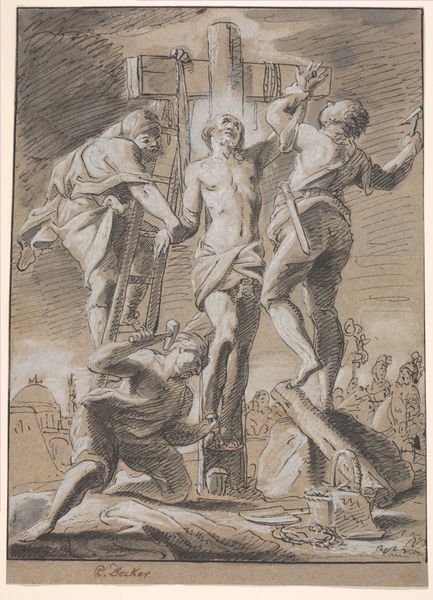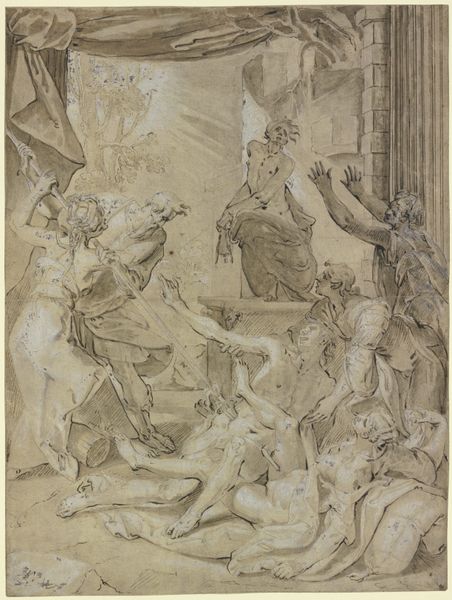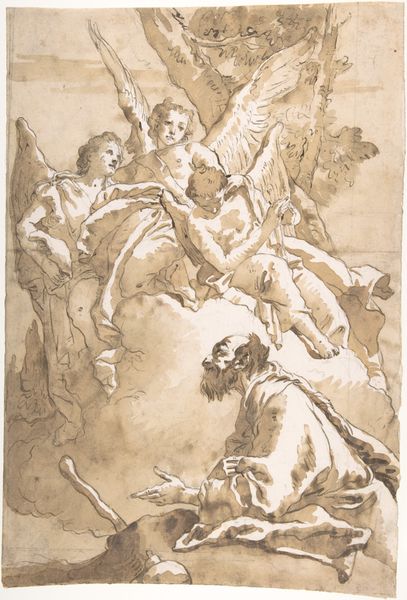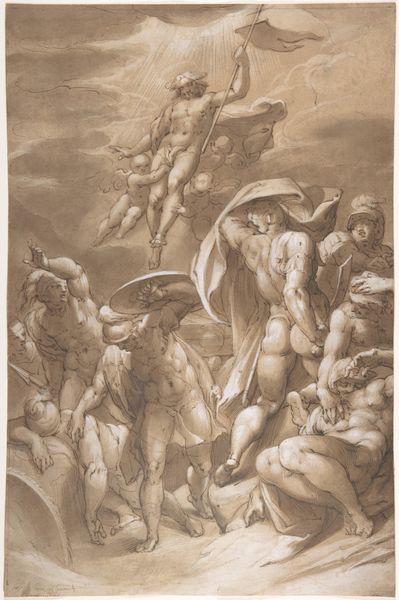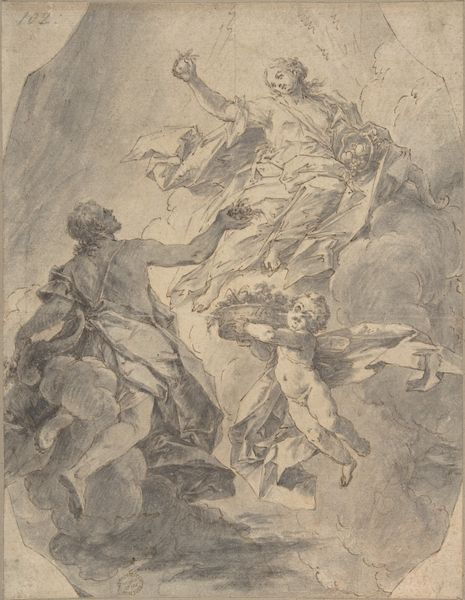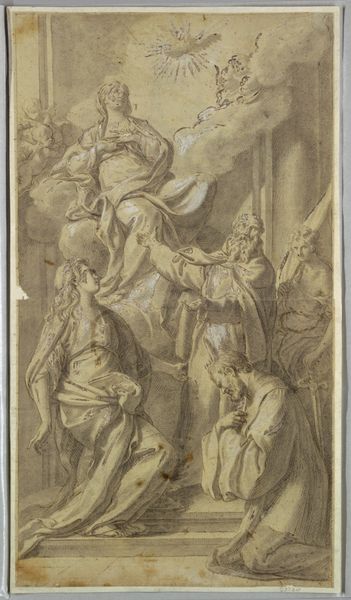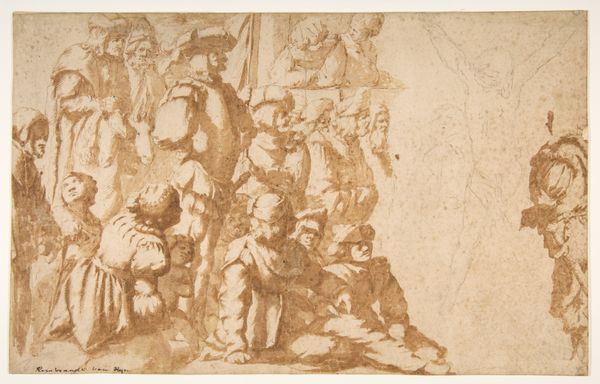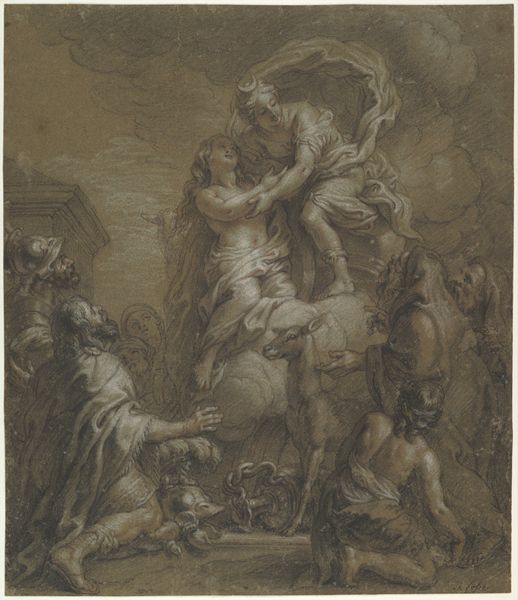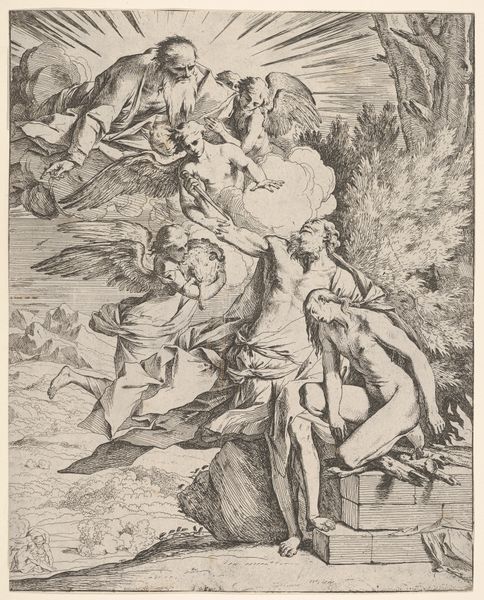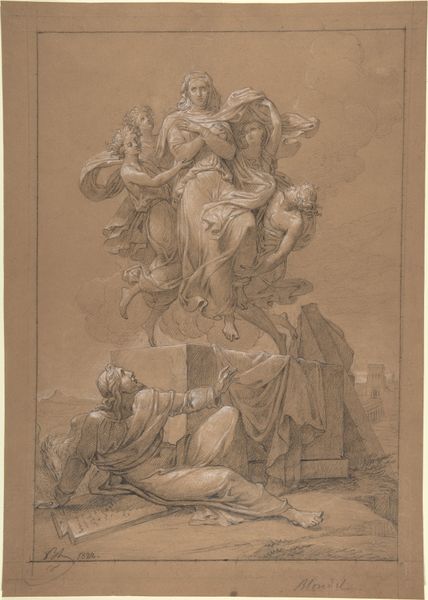
The Virgin and Child Enthroned with Saint Sebastian and a Franciscan Saint 1696 - 1770
0:00
0:00
drawing, print, charcoal
#
portrait
#
drawing
#
baroque
# print
#
charcoal drawing
#
figuration
#
oil painting
#
cross
#
child
#
charcoal
#
history-painting
#
italian-renaissance
#
nude
Dimensions: 12-1/8 x 9-3/4 in. (30.8 x 24.8 cm)
Copyright: Public Domain
Curator: This artwork, currently residing at the Metropolitan Museum of Art, is entitled "The Virgin and Child Enthroned with Saint Sebastian and a Franciscan Saint," attributed to Giovanni Battista Tiepolo and created sometime between 1696 and 1770. Editor: What strikes me immediately is the warm sepia wash, it's incredibly dynamic for what appears to be a preparatory sketch. The swirling forms feel so alive, less like a fixed image and more like the process of envisioning itself. Curator: Indeed, and that vibrancy aligns with Tiepolo's overall approach to devotional imagery. He was, after all, working in a period where the Church still wielded significant influence, yet artistic expression was breaking into more emotive, theatrical modes. Editor: Yes, it's that tension that interests me. You can see the incredible detail on the Madonna's robes, a dense fabric, while the body of Saint Sebastian has an almost unfinished quality. It emphasizes labor, how even sacred imagery depends on skill. And notice how light seems to pool on surfaces creating an interesting visual tension between finished and un-finished form. Curator: And within the social fabric of the time, the emphasis on visual drama played a specific role. Counter-reformation art sought to win hearts through spectacular display, thus Tiepolo was directly contributing to a certain mode of persuasion, engaging both intellect and emotions to reaffirm spiritual values within society. Editor: That's so important. The production of such art relied on both patronage and a network of skilled artisans, it’s the social context within a studio dynamic where these materials and images were made, and in many ways circulated as "the people’s art". This print is an index of these socio-economic realities. Curator: Precisely, and museums serve as stages upon which that legacy continues to perform its cultural role; in which "Tiepolo’s" art represents larger debates about our understanding and place within institutional power. Editor: I hadn't quite thought of it that way, I had such an intimate engagement focusing only on what's tangible and its production. Curator: I find analyzing artistic practice, social systems and their implications is what breathes new life and purpose into works that span across epochs.
Comments
No comments
Be the first to comment and join the conversation on the ultimate creative platform.
